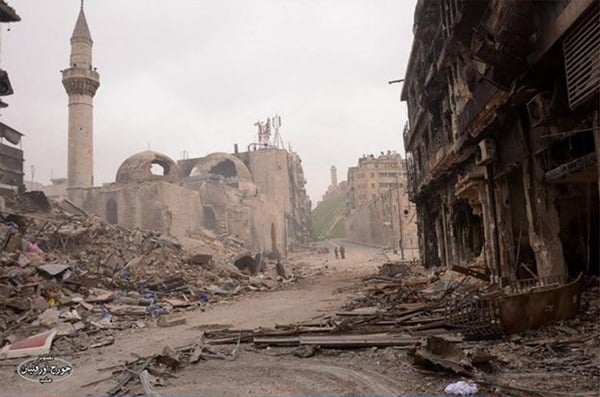Law & Politics
2014 Saw Horrific Damage to Syria’s Cultural Heritage


David Ebony

As the nation’s civil war rages on, human rights organizations and international cultural groups are trying to assess the extent of the horrific damage and destruction to Syria’s cities and cultural sites during this year. Reports this past week from Al Arabiya News say that the conflict, which is about to enter its fourth year, has resulted in more than 200,000 documented deaths. Syrian Observatory for Human Rights director Rami Abdel Rahman told the press that the total death toll is likely much higher, taking into account mass killings and casualties that are impossible to fully document. Hundreds of thousands of refugees have fled the country as the chaos escalated this year.
Along with the human toll, 2014 saw an increased level of devastation to Syria’s cities, historic sites and cultural institutions. According to a report out this week from Reuters, satellite imagery reveals that 290 cultural heritage sites in Syria have sustained significant damage. UNITAR, the United Nations Institute for Training and Research, which is monitoring and analyzing the data, say that 24 historic sites in Syria have so far been completely destroyed; 189 are severely or moderately defaced, and damage to 77 others is suspected. The town of Palmyra, for instance, with its ancient Roman temples, has been vandalized and its famous tombs have been pillaged.
Some of the worst damage was sustained in northern Syria in Aleppo, most of which was once protected as a UNESCO World Heritage Site. Both sides in the war have used the city’s ancient fortresses as military bases. A number of famous Islamic monuments that the radical Sunni Muslim insurgents deemed heretical have been destroyed. Even the Great Mosque, or Umayyad Mosque of Aleppo, built in 1090, has not been spared from destruction. While Syrian officials in charge of antiquities say that tens of thousands of portable works of art and artifacts spanning 10,000 years have been removed to special warehouses in secret locations, more immovable works of art and architecture could not be preserved. Efforts to stem the rising tide of destruction have so far been ineffectual (see “The Fight to Save Syria’s Cultural History from the Ravages of War “).